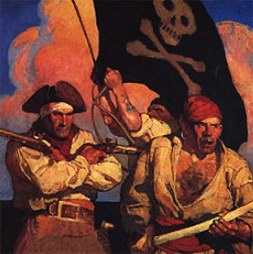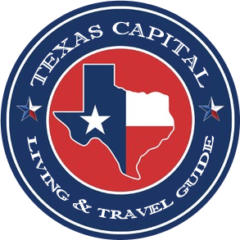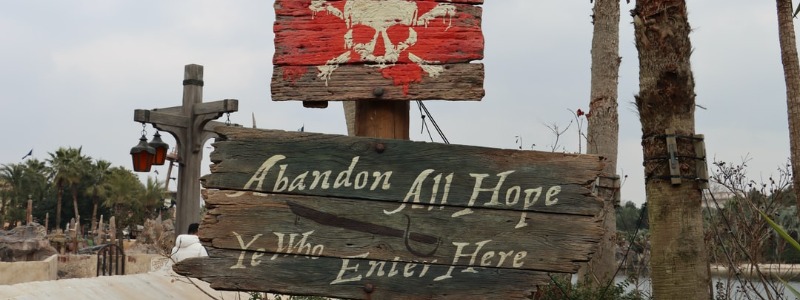With sun scorched hotel and condo towers rising high into the South Padre Island skyline it’s hard to imagine a time when the dunes were the only architectural shapes that populated the long stretch of sand bar that once reached from the Rio Grande River to near Galveston Bay.
But it was a day not long ago as time flies that enterprising Europeans discovered the unpopulated coastline of Texas and the wider Gulf of Mexico as happy hunting grounds in their bid for fame and easy fortune in the warm waters of the New World.
There were privateers, individual who contracted mostly with the Spanish government to salvage shipwrecks for a percentage of the find. And there were pirates and buccaneers that often crossed the line between privateering and pirating. Combined with slave traders and independent merchant vessels, often armed to the hilt, the Gulf of Mexico and Padre Island was a common destination for these colorful figures of the sea between the 15th and 19th centuries.
 Often the “pirates” secretly worked for governments like England and France, allied against the Spanish for dominance in the New World. Some of England’s top naval men were initially disguised as privateers and pirates and commanded moderate to large armadas of ships to carry on the secret work of their governments. Many later became independent and favored a life on the seas of the New World than they did their social standing in society back home.
Often the “pirates” secretly worked for governments like England and France, allied against the Spanish for dominance in the New World. Some of England’s top naval men were initially disguised as privateers and pirates and commanded moderate to large armadas of ships to carry on the secret work of their governments. Many later became independent and favored a life on the seas of the New World than they did their social standing in society back home.
Others simply preferred to swashbuckle a living off the bounties of the sea – and the hundreds of treasure-laden Spanish galleons that sailed the shipping lanes from Cuba to Veracruz across the width and breadth of the Gulf of Mexico.
Literally hundreds of shipwrecks are lost in the waters along the Texas coastline. At least 20 known ships from the “pirating years” still lay on the bottom of the Gulf or in the bay around South Padre Island.
The Laguna Madre was an ideal hiding place for pirates and privateers who could mask their ships from Gulf view because of the bountiful sand dunes on the Island. And many a ship washed over the island to become “bottomed’ in the bay at the whims of hurricanes and major gales that assailed them with little warning.
Even as late as the 19th century when Mexico and the Republic of Texas were locked in dispute and faced the possibility of another war, privateers and naval ships from at least four countries would ply the waters up and down Padre Island in search of opportunity and good fortune. And the number of colorful privateers, like Jean Lafitte, made Texas and the Islands just off her coast a home and hideaway for many years running.
Time and the elements have robbed us of the knowledge of how many ships have been lost on and around the sands of Padre Island, but most historians agree that the influence of pirating and privateering, in combination with drastic tropical weather in the Western Gulf, produced substantial numbers of lost ships and fortunes. Fortunes were lost and fortunes were won on Padre Island.
 JEAN LAFITTE
JEAN LAFITTE
Lafitte was a colorful character who lived much of his life outside the law. An independent and actually born and raised on an Island colony, Lafitte worked up and down the Gulf coast favoring New Orleans, Galveston, St. Joseph’s Island and Aransas Bay (near Corpus Christi), and South Padre Island. On a high note, Laffite aided Andrew Jackson in his siege of New Orleans. Without Laffite experienced rifles, the war may not have been won.
 JOHN HAWKINS
JOHN HAWKINS
Admiral Sir John Hawkins was an English shipbuilder, and commander, merchant, and slave trader. As treasurer and controller of the navy, he rebuilt older ships and helped design faster ships that withstood the Spanish Armada. He devised the naval blockade to intercept Spanish treasure ships. One of the foremost seamen of England, he was the chief architect of the Elizabethan navy. Hawkins used Padre Island as an ambush point and easy access to Spanish shipping lanes.
 SIR FRANCIS DRAKE
SIR FRANCIS DRAKE
Sir Francis Drake, Vice Admiral, was an English privateer, navigator, slave trader, politician, and civil engineer of the Elizabethan era. He was second-in-command of the English fleet against the Spanish Armada in 1588. So desperate was England’s desire to prevent the Spanish from robbing the treasures of the New World, that many trusted Naval commander was secretly authorized to become a privateer and engage the Spanish – without the flying the flag of England. Drake also used the Texas coast as a hiding place and to base pirate raids on Spanish ships and ports.
There were literally dozens if not hundreds of other pirates that frequented the waters around Padre Island and the Laguna Madre. Noteworthy are privateers Diego “El Mulato” from Cuba; Cornelius Holz, or Peg Leg, the Dutch pirate; Laurens Graff, better known as Lorencillo; and the legendary Grammont. There was also the female pirate, Mary Read, one of the very few women pirates, who was successful in her chosen occupation in spite of the predetermined role of women.

